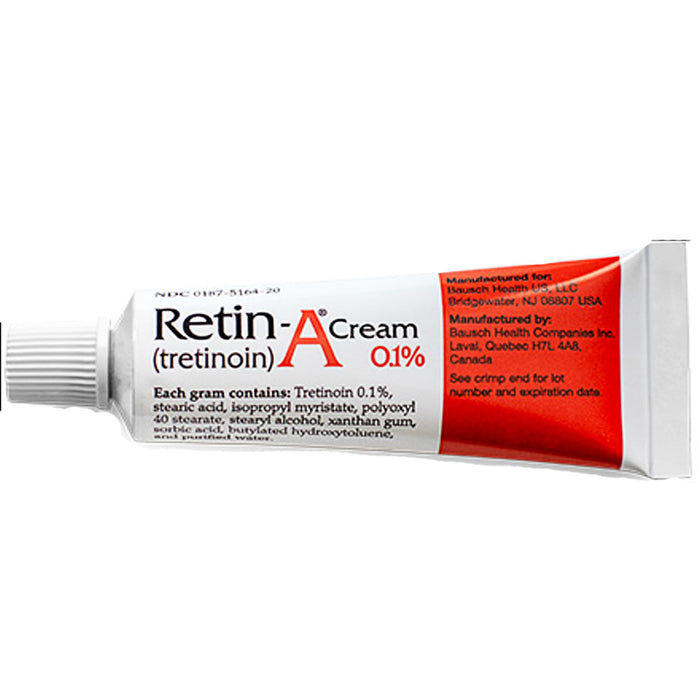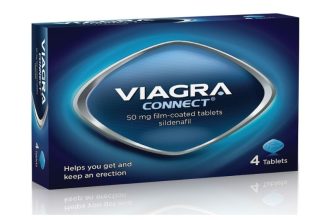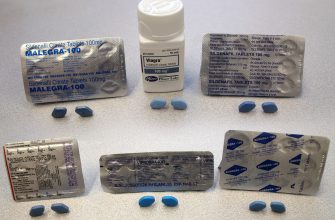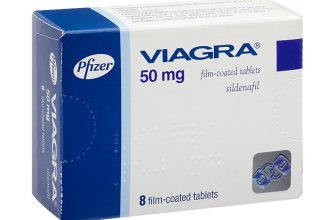Start with a consultation. Before using Retin-A, schedule an appointment with a dermatologist. They’ll assess your skin type and concerns, determining the appropriate strength and application method for optimal results. This personalized approach maximizes benefits and minimizes potential side effects.
Expect initial dryness and irritation. Retin-A increases skin cell turnover, leading to temporary dryness, redness, and peeling. Your dermatologist can recommend gentle cleansers and moisturizers to mitigate these common side effects. Using a pea-sized amount nightly is usually sufficient; less is often more.
Gradually increase usage. Don’t rush the process. Begin with application every other night, allowing your skin to adapt. Once tolerated, gradually transition to nightly use. Consistency is key for achieving noticeable improvements in texture and tone.
Protect your skin from the sun. Retin-A increases sun sensitivity. Daily sunscreen application with an SPF of 30 or higher is non-negotiable. This protects your skin from further damage and enhances the treatment’s effectiveness. Reapply sunscreen throughout the day, particularly after sweating or swimming.
Be patient. Visible results usually take several weeks or even months to appear. Don’t get discouraged if you don’t see immediate changes. Consistent use and adherence to your dermatologist’s recommendations are crucial for long-term success. Remember, a healthy skin routine contributes significantly to the long-term benefits.
- Retin-A in the USA: A Comprehensive Guide
- Understanding Retin-A Strengths and Formulations
- Managing Potential Side Effects
- Finding Retin-A in the USA
- Long-Term Use and Maintenance
- What is Retin-A and How Does it Work?
- Prescription Requirements and Obtaining Retin-A in the US
- The Consultation Process
- After Receiving Your Prescription
- Alternative Options
- Common Uses and Benefits of Retin-A
- Potential Side Effects and Risks Associated with Retin-A Use
- Managing Irritation
- Rare but Serious Side Effects
- Alternative Treatments and When to Consult a Dermatologist
- Lifestyle Changes
- When to See a Dermatologist
- Prescription Options
- Choosing the Right Treatment
- Tips for Safe and Effective Retin-A Use
Retin-A in the USA: A Comprehensive Guide
Always consult a dermatologist before starting Retin-A. They can assess your skin type and recommend the appropriate strength and application method. This personalized approach maximizes benefits and minimizes potential side effects.
Understanding Retin-A Strengths and Formulations
Retin-A comes in various strengths (0.025%, 0.05%, 0.1%, etc.), each suited to different skin conditions and sensitivities. Lower strengths are generally recommended for beginners or those with sensitive skin. Your dermatologist will guide you on the best option. Formulations include creams, gels, and lotions; the choice depends on your skin type and preference. Creams are often better suited for dry skin, while gels work well for oily skin.
Managing Potential Side Effects
Expect initial dryness, redness, and peeling. These are common side effects that typically lessen with continued use as your skin adjusts. To mitigate these, start with a low concentration, apply Retin-A every other night, and use a moisturizer regularly. Sun protection is critical; use a broad-spectrum sunscreen with at least SPF 30 daily, regardless of weather conditions.
Finding Retin-A in the USA
Retin-A is available by prescription only in the USA. You’ll need to schedule an appointment with a dermatologist or other licensed healthcare professional to obtain a prescription. Many pharmacies carry Retin-A once you have a prescription. Discuss your options and any concerns regarding cost with your doctor or pharmacist.
Long-Term Use and Maintenance
Consistent use is key for long-term benefits. Remember to follow your dermatologist’s instructions carefully. Regular follow-up appointments allow your doctor to monitor your progress and make adjustments as needed. Sustained use often leads to improved skin texture, reduced wrinkles, and clearer skin.
What is Retin-A and How Does it Work?
Retin-A, also known as tretinoin, is a topical retinoid–a vitamin A derivative. It works by increasing cell turnover in your skin.
This increased cell turnover accelerates the shedding of dead skin cells. This process helps treat acne by unclogging pores and preventing new breakouts. Simultaneously, it stimulates collagen production, leading to smoother skin texture and a reduction in fine lines and wrinkles.
Here’s a table summarizing the key actions of Retin-A:
| Action | Effect |
|---|---|
| Increased cell turnover | Reduces acne, improves skin texture |
| Stimulates collagen production | Reduces wrinkles, improves skin elasticity |
| Reduces hyperpigmentation | Fades age spots and sun damage |
Remember, consistent use is key to seeing results. You should expect gradual improvement over several weeks or months. Always follow your dermatologist’s instructions for application and dosage.
Potential side effects include dryness, redness, and peeling, especially when you first start using it. These typically lessen with continued use, but reducing application frequency or using a moisturizer can help manage them. If you experience severe irritation, consult your doctor.
Prescription Requirements and Obtaining Retin-A in the US
To get Retin-A in the US, you’ll need a prescription from a dermatologist or other licensed healthcare provider. This is because Retin-A, containing tretinoin, is a prescription-only medication.
The Consultation Process
Your dermatologist will assess your skin condition and medical history during a consultation. They’ll discuss your goals for using Retin-A and answer any questions you have about potential side effects and proper usage. Expect to discuss any allergies and other medications you’re currently taking. They will determine the appropriate strength of Retin-A for your needs and provide specific instructions.
After Receiving Your Prescription
With your prescription in hand, you can fill it at most pharmacies. However, availability may vary, so calling ahead to confirm they stock Retin-A is recommended. Generic versions of tretinoin are also available and often more affordable. Be sure to follow the instructions on your prescription label carefully. If you experience any unusual reactions or side effects, contact your dermatologist immediately.
Alternative Options
Online pharmacies that require a consultation from a licensed provider also offer Retin-A. However, be cautious and ensure the pharmacy is legitimate and licensed to operate in your state to avoid counterfeit products or scams. Always prioritize patient safety and verify credentials before using online pharmacies.
Common Uses and Benefits of Retin-A
Retin-A, a topical retinoid containing tretinoin, primarily treats acne. It works by unclogging pores, reducing inflammation, and preventing future breakouts. This leads to clearer skin and a reduction in acne scars.
Beyond acne, Retin-A effectively combats fine lines and wrinkles. It boosts collagen production, leading to smoother, firmer skin and a more youthful appearance. This effect is particularly noticeable with consistent use over time.
Retin-A also helps improve skin texture. It encourages cell turnover, resulting in a reduction in the appearance of age spots, sun damage, and hyperpigmentation. This leads to a more even skin tone.
For best results, apply a pea-sized amount to clean, dry skin at night. Start with less frequent application, gradually increasing usage as tolerated. Always use sunscreen during the day, as Retin-A can increase sun sensitivity.
Consult a dermatologist before starting Retin-A treatment. They can assess your skin type and recommend the appropriate strength and application schedule. They can also address any potential side effects, such as dryness, redness, or peeling, and provide solutions to minimize discomfort.
Potential Side Effects and Risks Associated with Retin-A Use
Retin-A, while effective for acne and aging, does carry potential side effects. Initial application often causes dryness, redness, and peeling. This is usually temporary and lessens with continued use, but gradual introduction is key. Start with a low concentration and apply it less frequently than prescribed, gradually increasing both as tolerated.
Managing Irritation
Sun sensitivity is a significant risk. Daily sunscreen with an SPF of 30 or higher is absolutely necessary. Avoid prolonged sun exposure, especially during peak hours. If irritation persists despite these precautions, consult your dermatologist; they may adjust your treatment plan or recommend supplementary moisturizers. Burning, stinging, or swelling beyond mild initial reactions warrants immediate medical attention.
Rare but Serious Side Effects
While uncommon, more serious reactions include skin discoloration (hyperpigmentation or hypopigmentation) and allergic reactions. Allergic reactions can manifest as hives, itching, or difficulty breathing, requiring prompt medical help. Hyperpigmentation is more common in individuals with darker skin tones. Careful monitoring and open communication with your doctor are crucial for managing any adverse effects.
Alternative Treatments and When to Consult a Dermatologist
Consider azelaic acid or niacinamide for mild acne. These over-the-counter options offer gentle exfoliation and reduce inflammation. For hyperpigmentation, consider vitamin C serums or hydroquinone (available by prescription). Remember to always patch test new products before widespread application.
Lifestyle Changes
- Maintain a consistent skincare routine.
- Use gentle cleansers and avoid harsh scrubbing.
- Protect your skin from the sun with a broad-spectrum SPF 30 or higher sunscreen daily.
- Hydrate adequately by drinking plenty of water.
- Manage stress levels through techniques like yoga or meditation; stress can exacerbate skin conditions.
When to See a Dermatologist
Schedule an appointment if:
- Your acne is severe or doesn’t improve with over-the-counter treatments.
- You experience persistent redness, inflammation, or pain.
- You develop new or changing skin lesions.
- You have concerns about scarring.
- You have tried alternative treatments without success.
Prescription Options
A dermatologist can prescribe stronger retinoids, antibiotics, or other medications tailored to your specific needs. They can also perform procedures like chemical peels or microdermabrasion to address scarring and improve skin texture.
Choosing the Right Treatment
The best treatment depends on your skin type, condition severity, and individual preferences. A dermatologist will help you determine the most appropriate approach.
Tips for Safe and Effective Retin-A Use
Begin with a pea-sized amount, applied nightly to clean, dry skin. Don’t overdo it!
Gradually increase usage frequency as your skin tolerates it. Many start with every other night application.
- Expect initial dryness, redness, or peeling. This is normal, but temporary.
- Use a gentle, fragrance-free cleanser. Avoid harsh scrubs.
- Moisturize daily, especially after applying Retin-A. Look for products labeled “non-comedogenic.”
Always apply sunscreen with an SPF of 30 or higher daily. Sun protection is paramount with Retin-A use.
- Apply Retin-A at night. Sunlight can increase sensitivity and irritation.
- Avoid using other harsh actives concurrently, such as benzoyl peroxide, without your dermatologist’s guidance.
- Be patient! Results take time, usually several weeks or months.
If irritation becomes severe, reduce frequency or temporarily discontinue use. Consult your dermatologist for personalized advice.
Remember consistency is key. Regular use provides the best results.










